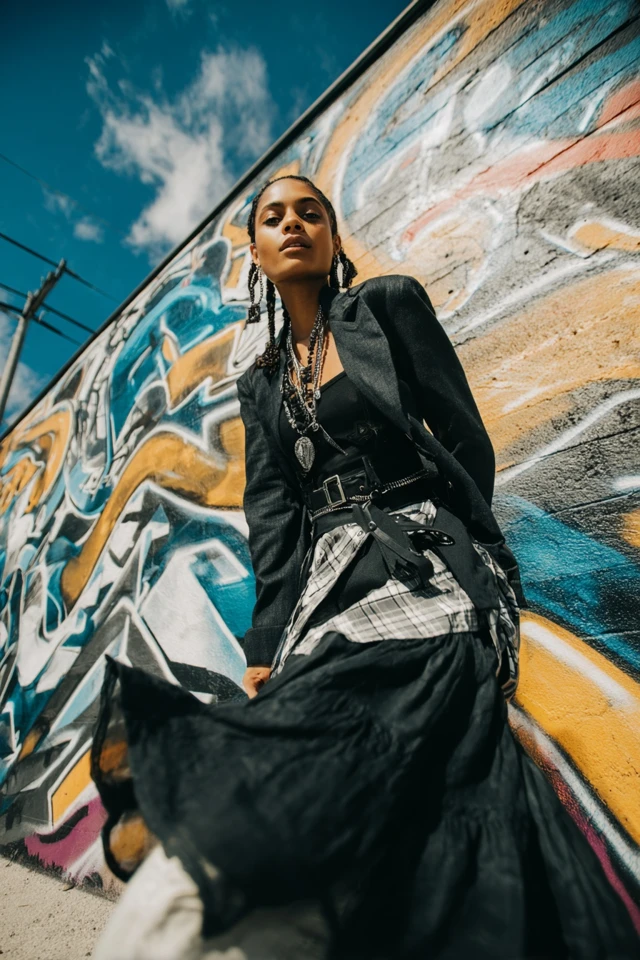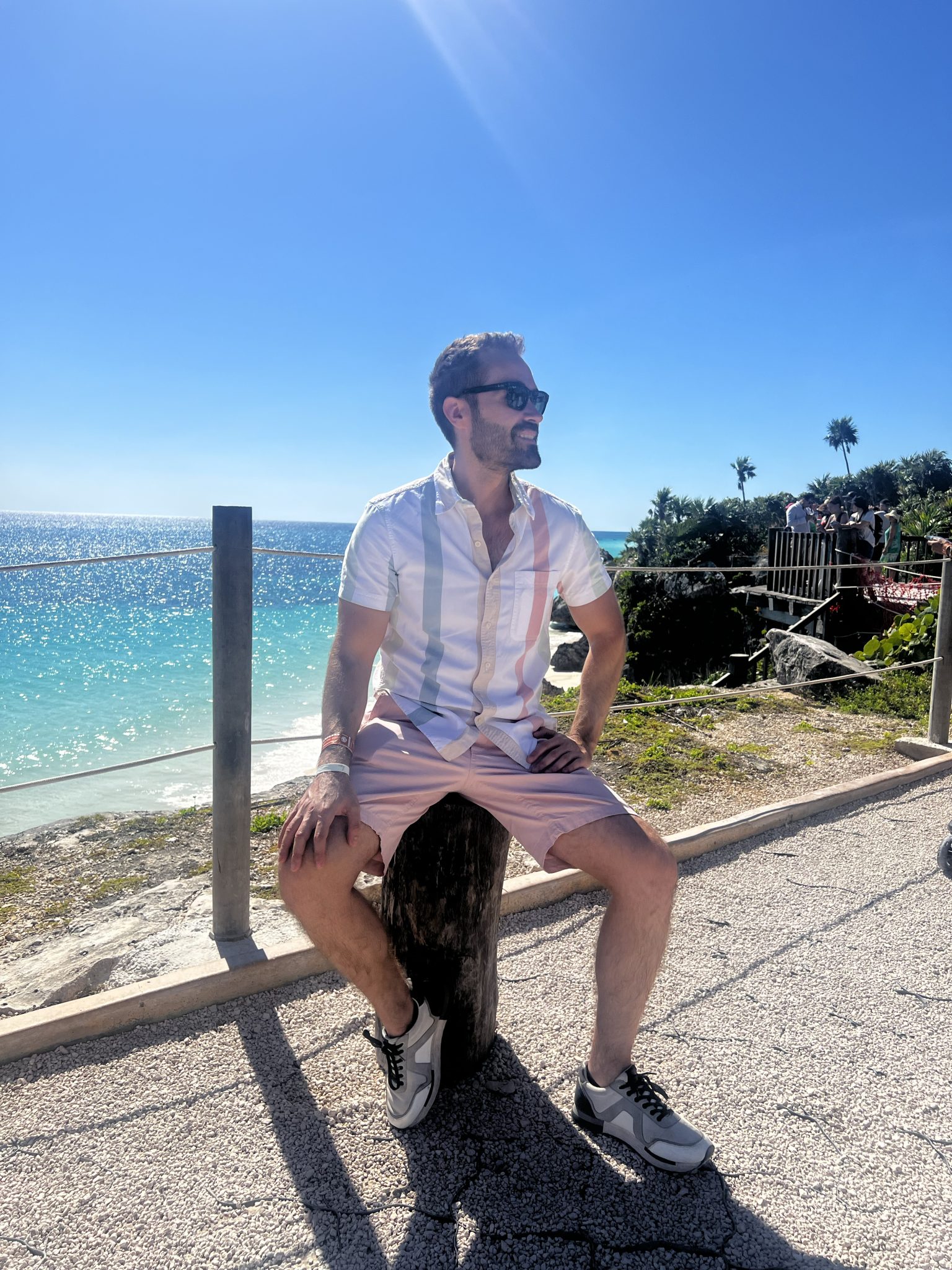Introduction
Standing in front of my closet, I remember the moment I realized the transformative power of the perfect blazer. It wasn’t just about looking polished; it was about feeling unstoppable. That classic 90s blazer I slipped on brought a wave of confidence unlike any other piece in my wardrobe. Suddenly, meetings felt less daunting, and casual outings exuded effortless chic. There’s something deeply empowering about a well-curated blazer collection, especially those iconic 90s styles that balance structure with personality.
Fashion is not merely fabric stitched together—it’s a language, a form of non-verbal communication that shapes how the world perceives us and, most importantly, how we perceive ourselves. When I first dove into the rich nuances of color psychology and the art of dressing to impress, it became clear that mastering the basics of a 90s blazer wardrobe is essential. This wardrobe foundation is much more than nostalgia; it’s about harnessing the past’s timeless appeal and turning it into a modern statement of authenticity and strength.
About the Author and My Trend Boutique
Today, more than ever, cultivating a curated 90s blazer collection matters because it encapsulates versatility, style longevity, and emotional resonance. These pieces are not fleeting trends; they are the cornerstone of a sophisticated, educated approach to fashion that enhances self-expression and confidence. Whether you’re striving for a powerful business look, a relaxed weekend vibe, or a blend of both, understanding the nuances behind these wardrobe staples will empower you to curate outfits that speak volumes.
Foundational Concepts
Before diving into the specifics of 90s blazer styles, it’s important to understand the foundational concepts that make this topic truly impactful: color psychology, trend forecasting, and dressing to impress.
Color Psychology
Color psychology explores how different hues influence emotions, perceptions, and decision-making. Research shows that colors like navy blue induce feelings of trust and reliability, while reds can evoke passion and urgency. When choosing a blazer, color becomes a silent yet powerful communicator that can elevate your presence in any room.
I once styled a client for a pivotal job interview, advising her to wear a soft pastel lavender blazer. Pastel shades signal approachability and calm, helping her come across as confident yet friendly. The result? She landed the job and credited her outfit’s color with easing initial tensions.
Trend Forecasting
Understanding trend forecasting helps you anticipate which blazer styles and colors will remain relevant—or rise in popularity. Forecasting blends data analysis, cultural shifts, and runway insights to predict what will capture the fashion zeitgeist. By aligning your wardrobe with forecasted trends, you invest wisely in pieces that extend your outfit’s life span.
The 90s blazer resurgence we see today isn’t random; it reflects a cultural desire for nostalgia, structure, and practicality. Designers are revisiting oversized shoulders, sleek tailoring, and neutral palettes, ensuring your wardrobe choices remain stylish without sacrificing individuality.
Dressing to Impress
Dressing to impress is a psychological strategy that goes beyond aesthetics. Your clothing influences how others perceive your competence, credibility, and confidence. A 90s blazer’s sharp tailoring and bold structure communicate authority while remaining approachable when styled thoughtfully. Understanding this dimension allows you to use fashion intentionally, making every outfit a strategic statement.
Personal style is not about copying trends; it’s about curating a look that enhances your best qualities and aligns with your goals. When I coach clients, I emphasize that dressing to impress isn’t about conformity but empowerment and authentic self-presentation.
Picture Gallery
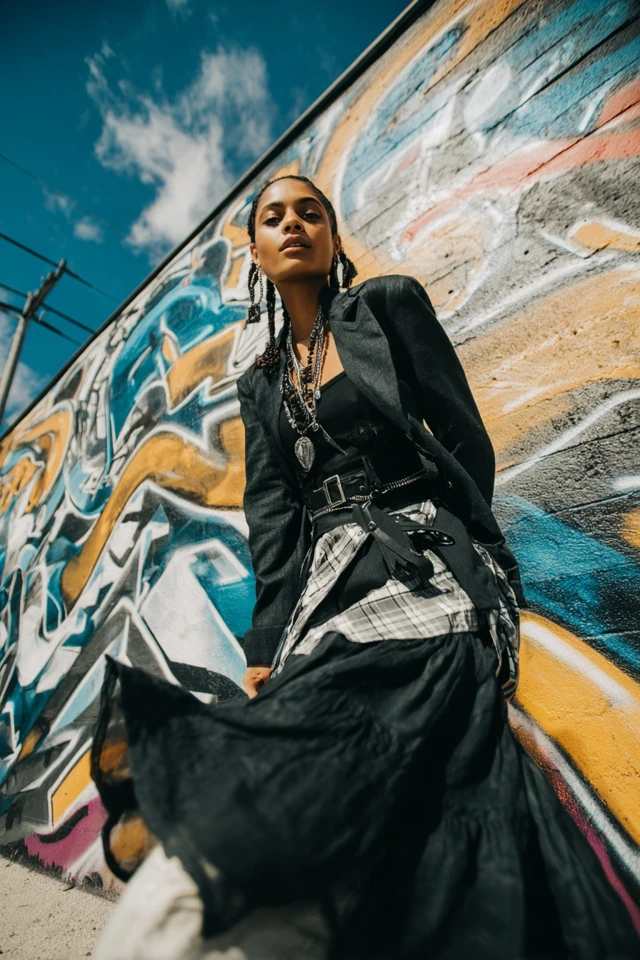
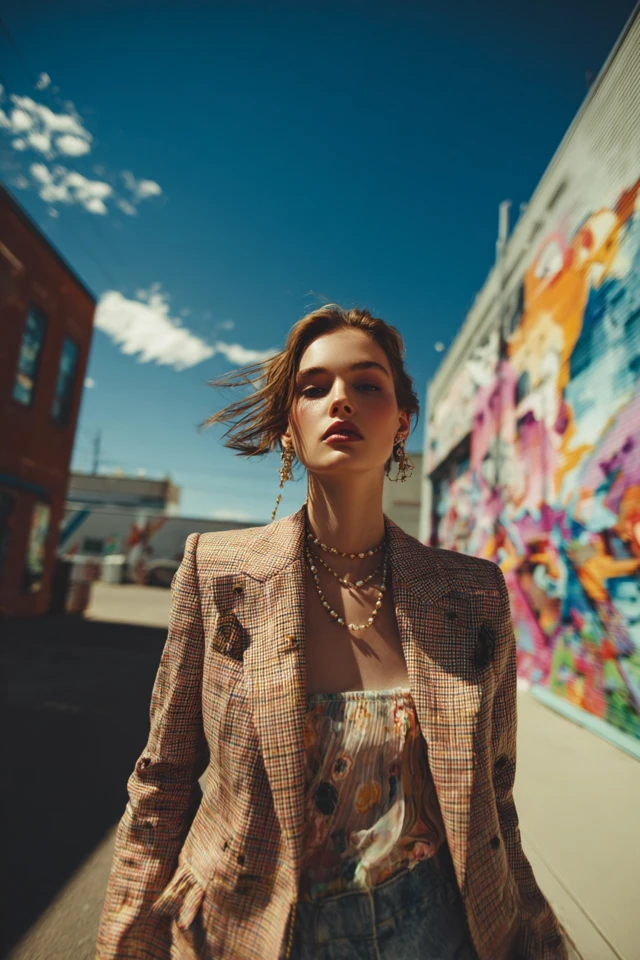
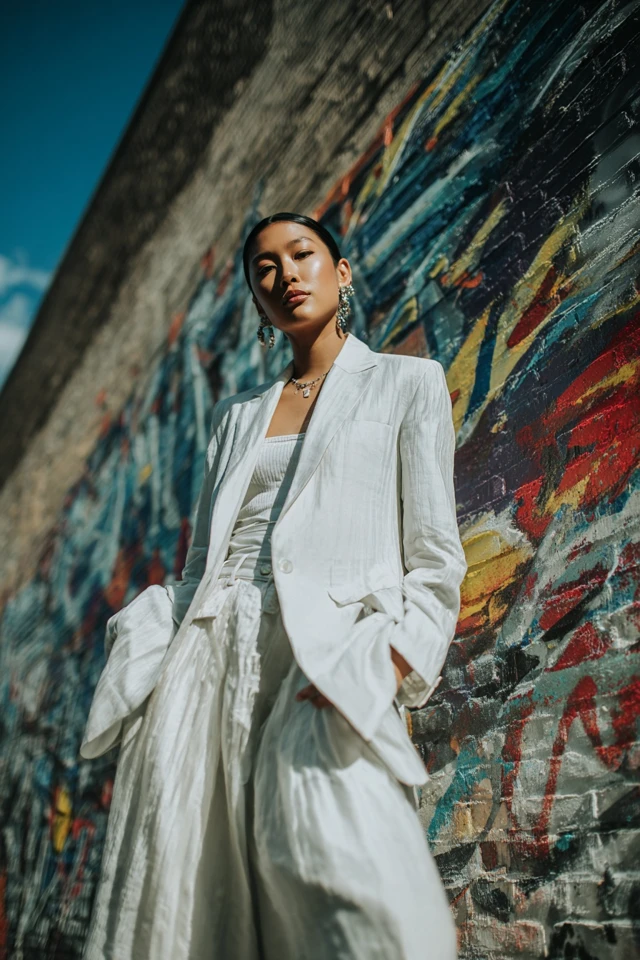
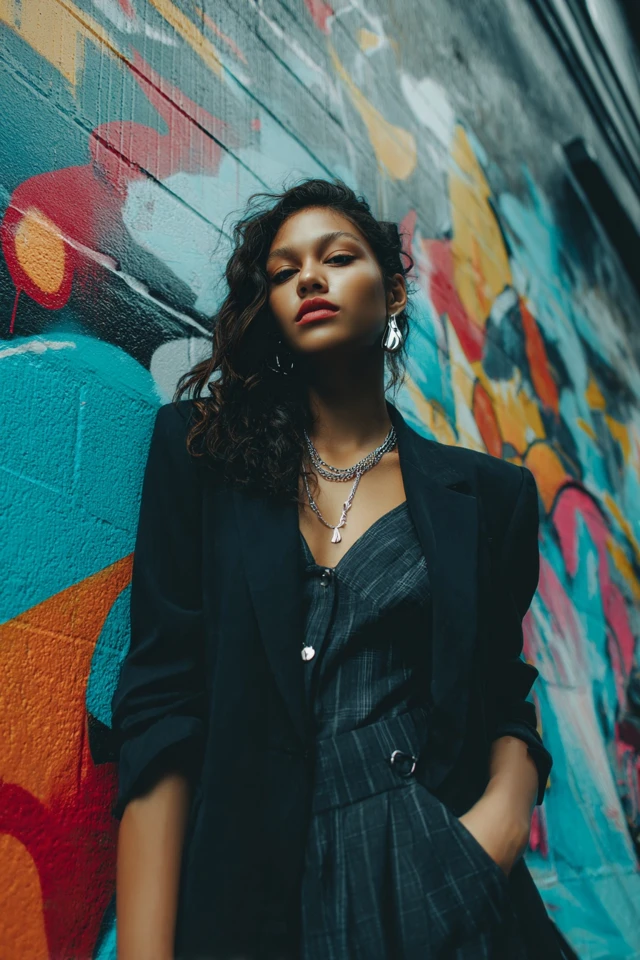
Color Psychology & Emotional Impact
The emotional impact of color in fashion is profound. Colors act as visual cues that impact mood and social interactions instantly, making color choice in blazers critical for first impressions. Studies in first-impression science reveal that people form judgments about personality and credibility within seconds, heavily influenced by clothing colors and styles.
For example:
- Black: Conveys power, sophistication, and formality but can also signal seriousness or aloofness if overused.
- Navy Blue: Often associated with trust and professionalism, making it a favorite for business blazers.
- Earth Tones (Camel, Olive, Rust): Evoke warmth, reliability, and approachability, bridging casual and formal aesthetics effortlessly.
- Bright Colors (Red, Electric Blue, Mustard): Signal confidence and creativity, perfect for those wanting to stand out while respecting the 90s palette.
Choosing blazer colors according to your desired vibe and context is essential. For an important presentation, navy or black may reinforce credibility and authority. For a casual lunch or creative meeting, a burly wood or blush pink blazer can soften your presence and invite connection.
In addition, wearing colors that align with your personal complexion and preferences helps boost internal confidence, creating a positive feedback loop where you feel good, and others respond warmly.
Personal Style & Body Type Considerations
One of the most empowering aspects of style is the ability to adapt fashion principles to suit your own body and personality. The 90s blazer, with its variety of cuts, fabrics, and colors, is exceptionally versatile in this regard.
Silhouettes and Fits
- Hourglass Figures: Opt for fitted blazers with cinched waists to highlight natural curves without overwhelming the frame.
- Rectangular or Athletic Shapes: Structured shoulders and slightly oversized cuts can create the illusion of curves and add dimension.
- Apple Shapes: Single-breasted blazers with longer lengths elongate the torso and minimize midsection focus.
- Pear Shapes: Shoulders with slight padding and darker hues balance proportions, complementing wider hips.
Fabrics and Textures
Fabric choice changes the blazer’s vibe:
- Wool and tweed: Perfect for colder months, establishing a timeless, textured aesthetic.
- Linen and cotton blends: Light and breathable for spring/summer, maintaining structure without heaviness.
- Velvet: Adds luxe depth; ideal for evening or statement looks.
Hues for Complexions
Knowing your undertones is the key:
- Cool Undertones: Try jewel tones like sapphire or emerald, and crisp neutrals like charcoal or navy.
- Warm Undertones: Explore earth tones—camel, rust, olive—and warm pastels like peach or blush.
- Neutral Undertones: Flexible across palettes; experiment freely with muted tones and bolder colors.
Body Type & Style Quiz
Take a moment to answer these to identify your optimal blazer style:
- Do you prefer form-fitting or relaxed clothing?
- Which areas of your body do you want to emphasize or downplay?
- What occasions will you mostly wear your blazer for?
- Do you favor classic neutrals or adventurous colors?
- Which blazers in your closet currently feel most flattering?
Your answers will guide you toward investment pieces that truly work for your unique structure, lifestyle, and aesthetic.
Current Trends & Timeless Classics
The 90s blazer remains an iconic piece, effortlessly bridging past and present. Currently, oversized blazers with relaxed shoulders and boxy fits are trending, often styled with high-waisted trousers or sleek dresses. Bold checks and minimalistic stripes are also popular, drawing from both retro charm and modern minimalism.
Timeless classics include tailored navy blazers, neutral camel coats, and single-button black blazers—these pieces withstand fashion cycles and anchor your wardrobe with versatility and polish.
To blend trends with classics, consider pairing a wide-shoulder plaid blazer with simple black trousers, or layering a neutral wool blazer over a vibrant silk blouse. Accessories such as gold-tone buttons, structured belts, or subtle shoulder pads can modernize vintage cuts, creating a fresh yet familiar look.
Explore resources like Vogue Trends and Pantone’s Color Intelligence to stay abreast of seasonal updates and expert palettes.
Practical Tips & Recommendations
Shopping for a 90s blazer wardrobe begins with quality over quantity. Seek natural fabrics such as wool, cotton, or linen blends, and prioritize pieces with clean seams and functional buttons. Vintage stores and sustainable brands often carry authentic or inspired blazers that align with this aesthetic.
To maintain your blazers:
- Follow care labels meticulously, using gentle detergents and proper storage.
- Use padded hangers to preserve shape and avoid shoulder dents.
- Seamlessly rotate your collection to prevent wear and extend timelines.
Layering a 90s blazer is an art: try pairing with turtlenecks, graphic tees for a casual edge, or silk blouses for formal looks. Mixing colors can transform a simple outfit. For example, a camel blazer looks striking over denim and a bright scarf, while a black tailored blazer pairs flawlessly with jewel-toned hues.
When accessorizing, minimal gold or silver jewelry complements the clean lines of blazers without overwhelming them. Add a structured handbag or loafers for a balanced, sophisticated appearance. If you’d like to experiment, try color-blocked layering or multifaceted textures for a modern twist.
FAQs
- Q: How do I find my signature blazer color?
- A: Start by assessing your skin undertones and lifestyle needs. Experiment with versatile neutrals alongside a few statement pieces in colors that make you feel energized and confident.
- Q: Can I build a quality blazer wardrobe on a budget?
- A: Absolutely. Explore thrift stores, consignment shops, and online marketplaces. Focus on timeless silhouettes and invest in quality tailoring to refresh finds.
- Q: What pieces should I include in a capsule blazer wardrobe?
- A: Essentials include a classic black blazer, a neutral camel or beige, and a patterned or colored blazer reflecting your personality, all tailored well to your body.
- Q: How do I style 90s blazers for casual wear?
- A: Pair oversized blazers with high-waisted jeans or graphic tees. Add sneakers or ankle boots to keep the outfit relaxed yet chic.
- Q: What fabrics work best for year-round blazer wear?
- A: Lightweight wool, cotton blends, and linen are ideal for versatility. Choose heavier tweed or velvet blazers for cooler months and linen or cotton for warmer seasons.
Conclusion
Curating a 90s blazer wardrobe is more than a style choice—it’s a journey into self-expression, confidence, and sartorial intelligence. By understanding key concepts like color psychology and body type considerations, you position yourself to make strategic fashion decisions that enhance how you feel and how others perceive you. Marrying current trends with timeless classics ensures your investment pieces remain relevant and inspiring.
I encourage you to experiment boldly with shapes, colors, and mixing old with new. Each blazer you add is a step toward crafting your personal brand and elevating your everyday style. Please share your favorite blazer stories, questions, or styling discoveries in the comments below, and don’t forget to subscribe for more expert insights tailored to empower your fashion journey.

